#ural minerals
Explore tagged Tumblr posts
Photo
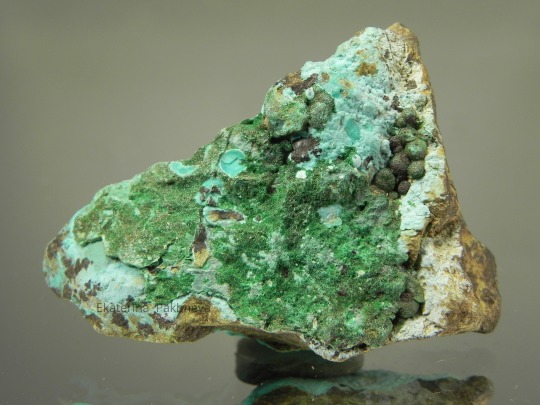
Chrysocolla and malachite
Nizhny Tagil, Sverdlovsk region, Middle Urals
Photo: Ekaterina Pakhneva
#chrysocolla#Malachite#Ural#nature#green#blue#beautiful#june#photography#minerals#mineralogy#mineral specimen#geology#earth#natural#i love minerals#mineral collection
74 notes
·
View notes
Text
There's already Fantasy Russia doomposting, let's have Fantasy Russia wishes too!
We have Balkan and Greek references in the game, so no need to restrict yourself to Russian Empire. Go ham. I'll start.
Name change. Please. It's so cringe currently.
A world quest chain based on Bazhov's tales (miners' folklore mixed with Ural and Slavic fae stories). Non-negotiable.
Trains and trams. Do I even need to say it?
TRDLO. Look at it. Look at it. We can have Western Slavs too and if there's no trdlo I'll riot:

(for the US people reading this: it's a sweet pastry cooked on metal rods over coals, popular street food in Prague, although it was originality Hungarian. eating it on a cold day is an Experience)
Frozen lake sounds, they sound a bit like whalesong.
Sami people. Finnish references in general.
Childe's family's side of his story.
A tired playwright bullied by censors.
Sirin and Alkonost birds! Half-birds half-humans who could put you to sleep or kill you with a song.
A black cat called Behemoth. iykyk.
Pulcinella as an Alexander II reference ("ruling Snezhnaya is not hard but it's pointless").
A giant bridge over a harbour.
Greenhouses. Just giant greenhouses.
Some steppes. A girl can hope.
Bog.
A springtime area near the sea with rhododendrons in bloom.


Space program. If Natlan can be modern then Snezhnaya can have space program. We are going to the moon to poke at a dead goddess (now where have I seen that... hm).
Cyberpunk and medical horror.
Pantalone's Ayn Rand era.
Atonal music.
Linguists.
An ice skating mechanic.
I'm assuming that Soviet adaptation of The Snow Queen (one of the things that inspired Miyazaki to draw) is a given, so here's an obligatory mention.
And, the last but not the least, 6 nations coalition army entering Snezhnaya for humanitarian help after the country falls apart on its own.
Hoyo, please. Allow us to have nice things at least sometimes.
#there's also a bunch of 20th century literature that only russians would recognise#it will do nothing for the foreigners so I didn't add it to the post#I'm low-key hoping to see some passing mentions in world quests#hoyo sometimes do dig that deep#genshin#fatui#snezhnaya#ew#the name is still cringe#I hate it here#can I tag it with childe?#it's his homeland after all#childe
66 notes
·
View notes
Text

Vitaly Volovich's illustration for russian tale "The Mistress of the Copper Mountain" by Pavel Bazhov.
The Mistress of the Copper Mountain, also known as The Malachite Maid, is a Russian fairy tale character, the mountain spirit from the legends of the Ural miners and the Mistress of the Ural Mountains of Russia. In the national folktales and legends, she is depicted as an extremely beautiful green-eyed young woman in a malachite gown or as a lizard with a crown. She has been viewed as the patroness of miners, the protector and owner of hidden underground riches, the one who can either permit or prevent the mining of stones and metals in certain places.
#vitaly volovich#виталий волович#pavel bazhov#павел бажов#the mistress of the copper mountain#хозяйка медной горы#russian#slavic#russian tales#русские сказки#russian art#russian illustration#illustration#tale illustration
316 notes
·
View notes
Text
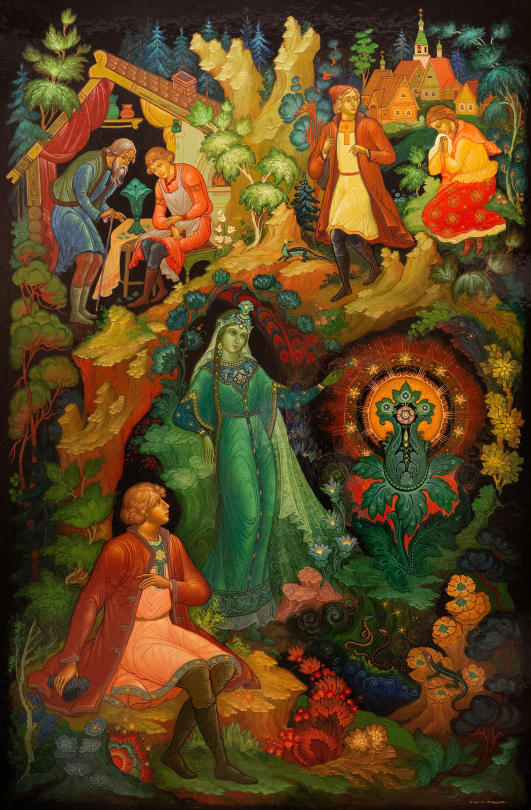
The Mountain Craftsman
Created in the traditional style of Palekh miniature, this panel by a Palekh-born artist Kaleria Kukulieva features scenes from Pavel Bazhov's collection of fairy tales about the Malachite Maid also known as "The Mistress of the Copper Mountain".
She is a prominent figure of general Russian fairy tales and local Ural folk tales coined around the area of one of the oldest Ural-based copper mines. Having been in use since around mid-2nd millennium BCE, this mine would receive the folk name "The Copper Mountain".
The Malachite Maid is described differently in various sources. Most frequently she is a stone woman in a dress of malachite who guards the mines and the ore reserves deep in the heart of the Ural mountains. She is a benefactor of respectful miners and seems to favor talented craftsmen, but she is also a protective spirit of the mountain region that punishes those who take her patronage for granted.
In Bazhov's fairy tales, she's a woman of medium height, not very tall, and beautiful to look at. Her hair is black and braided, heavy and going straight down her back; the ribbons in it are presumably made of copper. In other tales, she can transform into or is inherently a green lizard with a golden crown on her head (currently depicted on the coat of arms of the town where the Copper Mountain is located).
Photo source: 🏺
#MITOLOGIA 🏛️#BELLAS ARTES 🖼#russian art#russian artist#russian folklore#russian fairy tales#slavic mythology#malachite maid#id in alt text
16 notes
·
View notes
Text

Monster Girl October Tarot day 6: Azovka/The Mistress of the Copper Mountain as the King of Pentacles card!
Azovka's story is told in "The Beloved Name" which tells of a giantess who immortally protects a hoard of treasure within the Siberian Ural mountains. If a man is successful in guessing her name, she will reveal herself and wed him, but no one has ever succeeded and instead many miners perish looking for the treasure. She is also in some stories treated as synonymous with another character referred to as The Mistress of the Copper Mountain who is a shape-shifting goddess who wears malachite, can take the form of a lizard, and is a dangerous, beautiful spirit in the mountains who protects incredible treasure. Since the king of pentacles implies wealth, success, and power, Azovka was the choice for this card!
#russian literature#inktober#tarot#ink#traditional art#drawtober#artober#sketchbook#drawlloween#the beloved name#azovka#mistress of the copper mountain#russian lit#folklore#folk tales#monster girls#monster girl october#king of pentacles#tarot card#tarot cards#pentacles
9 notes
·
View notes
Text
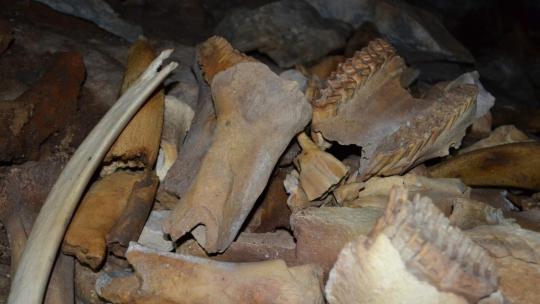
Siberian Cave Filled with Mammoth, Rhino and Bear Bones is Ancient Hyena Lair
Siberian locals have discovered an incredible prehistoric time capsule in what paleontologists believe is the largest ancient hyena lair ever found in Asia. The cave contained a whole menagerie of animal bones that had been undisturbed for about 42,000 years.
Paleontologists found the bones of both predator and prey animals from the Pleistocene epoch (2.6 million to 11,700 years ago), including brown bears, foxes, wolves, mammoths, rhinos, yaks, deer, gazelles, bison, horses, rodents, birds, fish and frogs.
The researchers posted a video of the discovery (in Russian) on June 20.
Residents of Khakassia, a republic in southern Siberia, discovered the cave five years ago, according to a translated statement from the V. S. Sobolev Institute of Geology and Mineralogy. However, due to the remoteness of the area, paleontologists weren’t able to fully explore and examine the remains until June 2022.
They collected around 880 pounds (400 kilograms) of bones, including two complete cave hyena skulls. The paleontologists suspect the hyenas lived in the cave because the bones had gnaw marks consistent with hyena teeth.

“In addition, we came across a series of bones in anatomical order. For example, in rhinos, the ulna and radius bones are together," Dmitry Gimranov, senior researcher at the Ural Branch of the Russian Academy of Sciences, said in the statement. "This suggests that the hyenas dragged parts of the carcasses into the lair."
The researchers also found the bones of hyena pups — which tend not to be preserved as they are so fragile — indicating they were raised in the cave. "We even found a whole skull of a young [hyena], many lower jaws and milk teeth," Gimranov said.
Siberia is rich with the remains of Pleistocene animals. Their remains are not old enough to be fossilized, or replaced with rock through a mineralization process. The bones, and sometimes skin, flesh and even blood of these animals are often not much different than they were the year they died. This is thanks — in large part — to the cold weather preserving the remains.
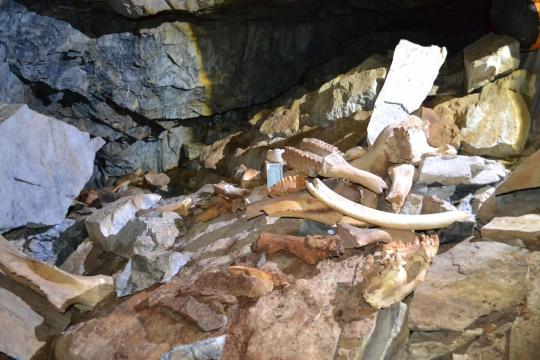
The bones have been sent to Yekaterinburg for further analysis.“[T]he finds will also tell us about the flora and fauna of that time, what animals ate, what the climate was like in this area,” Dmitry Malikov, senior researcher at the Institute of Geology and Mineralogy of the Siberian Branch of the Russian Academy of Sciences, said in the statement.
“We will also get important information from the coprolites,” the fossilized feces of the animals, he added.
By Kristin Hugo.
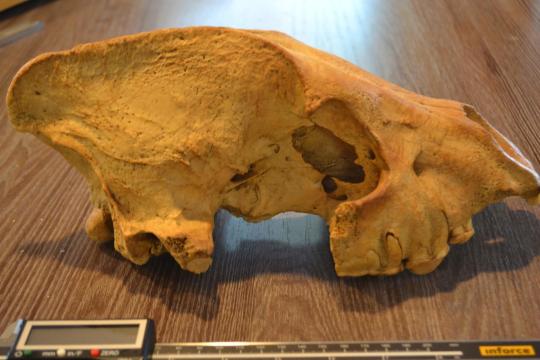
#Siberian Cave Filled with Mammoth Rhino and Bear Bones is Ancient Hyena Lair#prehistoric#paleontologist#paleontology#Pleistocene epoch#fossil#bones#skeleton#archeology#archeolgst#history#history news#ancient history#ancient culture#ancient civilizations
40 notes
·
View notes
Note
? 👀👀
Ognivo was inspired by Urals' folktale "Ognivushka-poskakushka" (or «The Dancing Fire Maid» in translation ). Ognivushka is a fire spirit that shows miners where lies gold. That explains Ognivo's warm colors and usage of gold accessories.

14 notes
·
View notes
Text

Giant Malachite Vase Hermitage Museum, St. Petersburg, Russia This vase ranks as one of the most attractive piece of polished stone that has ever been made. Malachite is a beautiful mineral, deep green and generally exhibiting parallel bands or circles of different shades. It is relatively soft and takes a beautiful polish.
Russia possesses some of the world's largest high-quality malachite deposits near the city of Yekaterinburg in the Ural Mountains (this is also the place where Tsar Nicholas II and his family were murdered in 1918). The mines no longer operate, but they did in the 18th century when the Winter Palace was being built in St. Petersburg. That Palace, which today is the Hermitage Museum, has a large number of exceptionally fine malachite pieces, such as the one shown here. Some of the structural elements in the palace, like columns, are made of malachite, but these can only be decorative because malachite is fragile and cannot support much weight. One room in the palace is called malachite room. It served as the drawing room for Princess Alexandra Fiodorovna, the wife of Nicholas I. It contains 16 malachite columns and several vases and pieces of furniture made of malachite. Image credit to respective owner.
5 notes
·
View notes
Text
What is the perovskite?
Perovskite refers to a class of materials that share the same crystal structure as the mineral calcium titanium oxide (CaTiO₃), which was first discovered in the Ural Mountains of Russia by Gustav Rose in 1839 and named after the Russian mineralogist Lev Perovski. Perovskite materials have the general formula ABX₃, where 'A' and 'B' are cations of different sizes, and 'X' is an anion, typically oxygen.
Perovskite solar cells
Perovskite solar cells (PSCs) represent a rapidly advancing technology in the field of photovoltaics, offering a promising alternative to traditional silicon-based solar cells. They are named after the perovskite-structured compound used as the light-absorbing layer, typically a hybrid organic-inorganic lead or tin halide-based material. This overview covers their structure, working principle, advantages, challenges, and future prospects.
#solar energy#solar cells#science#materials science#engineering#materials#perovskite solar cells#perovskite
2 notes
·
View notes
Text
Alexandrite

Did you know?
That Alexandrite is a mineral that can change color depending on different light sources.
The term Alexandrite came from Emperor Alexandria ii.
Alexandrite that comes from the Ural Mountains of Russia is colored green in daylight to red in incandescent light.

Other varieties of alexandrite may be yellowish or pink in daylight and a columbine or raspberry red by incandescent light.
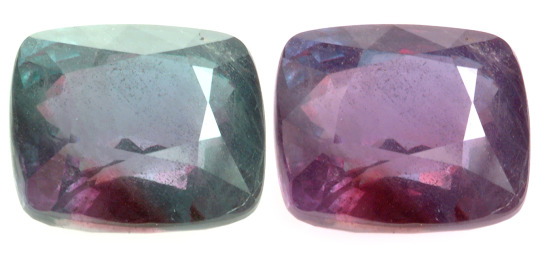
This chameleon-like color shift is the result of its uncommon chemical composition which includes traces of chromium, the same coloring agent found in emerald. The unlikelihood of these elements combining under the right conditions makes alexandrite one of the rarest and most expensive gemstones on Earth.
The alexandrite mined from Russia’s famed deposits set the quality standard for this gemstone. Today, most alexandrite comes from Sri Lanka, Brazil, and East Africa, generally paling in comparison to the vivid colors of Russian gemstones.
With a hardness of 8.5 on the Mohs scale, alexandrite is softer than sapphire and harder than garnet—the other gemstones that can change color. However, due to its scarcity, alexandrite is more valuable than most gemstones, including rubies and diamonds.

11 notes
·
View notes
Video
youtube
The Largest Prehistoric Copper Mine in the World
Nov 20, 2024 This is the story of what ancient mining experts have called “the largest prehistoric copper mine in the world”. The incredible Mines of Kargaly. At the farthest reaches of Europe, on the steppes, between the Ural Mountains and the Caspian Sea, almost four thousand years ago, massive mining works completely transformed the landscape. They dug vast numbers of vertical shafts into the bedrock and then chased the veins of ore by digging a staggering network of interlinked tunnels extending for hundreds of kilometres. Their excavations were so extensive that experts estimate they produced up to a staggering 150,000 tons of copper during the Bronze Age. But what society was conducting operations of this scale out here on the steppe? How did they find these ore deposits so long ago? Where did the miners live and how did they carry out these works? And what ultimately happened to them?
1 note
·
View note
Text
Potash Market Extravaganza: Elevating Farming to New Heights of Success
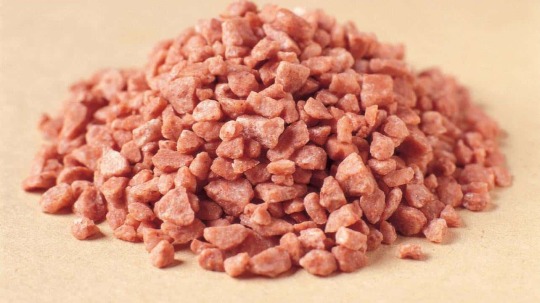
Potash Industry: Understanding the Essence of Potash and its Importance in Agriculture
Introduction to Potash
Potash is the common name for various potassium-containing salts and minerals, specifically those water-soluble salts containing potassium ions. Potassium is a mineral that is essential for humans, animals and plant growth. It helps in regulating the water balance inside the cells of a plant and activates various enzymes that are involved in photosynthesis, protein synthesis and starch formation. Plants need potassium to build strong cell walls, send sugars to different parts of the plant and tolerate environmental stress.
Uses of Potash in Agriculture
One of the main uses of potash is in agriculture as a fertilizer. Potassium is one of the three primary plant nutrients, along with nitrogen and phosphorus. Potash chemicals are enriching agriculture globally as they improve both crop quality and yield. Application of potash industry helps in:
- Increasing Crop Yields: Potash application significantly increases crop yield by 10-30% depending on the crop and soil type. It plays a key role in improving root growth, stem strength and disease resistance of plants.
- Improving Produce Quality: Potassium helps in improving the size, color, texture, taste and shelf life of produce. It enhances produce sugar levels and nutrient density. Crops like fruits, vegetables, potatoes and tobacco see significant quality benefits from potash application.
- Disease and Pest Resistance: Potash allows plants to better resist environmental stresses like drought, heat, frost and diseases. It improves protein synthesis and allocation within plants thereby enhancing their immunity.
- Water Use Efficiency: Proper potassium levels in soil and plants results in efficient uptake and use of water. It regulates water balance in cells allowing for improved yields under water stress conditions.
- Protein and Starch Formation: Potassium activates numerous enzymes required for photosynthesis and production of starches, oils and proteins in plants. It maximizes yields by optimizing plant metabolism.
Sources of Potash
Some of the major natural mineral sources of potash that are commercially extracted and processed as fertilizers include:
- Potash Salt or Sylvite (KCl): Found as beds of evaporite mineral deposits primarily in Germany, Canada and Russia. It contains approximately 50% K2O.
- Carnallite (KMgCl3.6H2O): Hydrated potassium magnesium chloride mineral found in Germany and the USA. It contains approximately 23% K2O.
- Langbeinite (K2SO4.2MgSO4): Double sulfate potash mineral mined in Germany, Israel and the USA containing approximately 22% K2O.
- Polyhalite or Sylvinite (K2Ca2Mg(SO4)4.2H2O): Double sulfate potash-magnesium mineral mined in the UK, Israel and Russia containing approximately 11-15% K2O.
All these minerals undergo processing to become potash chemicals suitable for agriculture and horticulture applications in the form of muriate of potash (KCl), sulphate of potash (K2SO4) etc.
Major Producers and Consumers
Some major global producers and exporters of potash include Canada, Russia and Belarus.
- Canada is the largest producer and supplier of potash globally, mining over 20 million tons annually primarily from Saskatchewan region reserves.
- Russia is the second largest producer extracting potash from the Urals and central Siberia. It exports significant quantities of potash worldwide.
- Belarus is another large potash producer and exporter located strategically between Russia and Europe.
On the consumption front, top potash importing countries include United States, Brazil, India and China as they have huge agricultural sectors. Developing countries in Asia and Latin America have been steadily increasing their potash fertilizer usage to boost farm productivity to feed their growing populations. Global potash consumption is projected to rise further with growing food security concerns.
Potash Industry Dynamics
The global potash market is dominated by a few large producers and is influenced by politics, trade policies and crop price fluctuations across regions. Major dynamics shaping the potash fertilizer market include:
- Threat of Substitute Products: Emergence of bio-stimulant products and organic fertilizers pose threat to potash, however, their uptake is still marginal compared to conventional potash chemicals.
- Trade Policies of Major Producers: Decisions of Canadian, Russian and Belarusian governments regarding export quotas and duties significantly impact global potash prices.
- Energy Costs: Rising natural gas prices impact the energy intensive potash mining and processing operations of producer countries.
- Currency Exchange Rates: Currency values of major potash trading countries like Canada, Russia and the US determine FOB and landed costs of potash imports.
- Monsoon and Crop States: Good monsoons and positive outlook of major consuming regions like India and China boost global potash demand during planting seasons.
- Mergers and Acquisitions: Large deals re-shape the production capacities and market shares of top potash mining companies over time.
In summary, potash industry continues to be an essential input for sustainable agriculture globally. Its production, trade and consumption dynamics are influenced by multiple macroeconomic and geopolitical factors across regions.
0 notes
Text


Alexander Koshkin's illustration for russian tale "The Great Snake" by Pavel Bazhov.
The character of Poloz the Great Snake is based on the Ural legends, miner's omens, and on the superstitions of the Khanty, the Mansi people, and the Bashkirs. The legends about Poloz, a giant serpent 6–10 meters long, still exist at the Urals. In the Bashkir folklore there is the character the Master of Gold, which can appear as various animals, including the snake. At the Urals he is also called The Serpent or The Snake King (Russian: Змеиный царь, Zmeinyj tsar). It is believed that the grass turns yellow where he touches the surface. Poloz and the snake trails in general indicate the location of gold. Slowworms are his servants.
#alexander koshkin#александр кошкин#павел бажов#pavel bazhov#русские сказки#про великого полоза#сказки бажова#russian#slavic#russian tales#russian art#russian illustration#tale illustration#illustration#zmei#змей
96 notes
·
View notes
Text
This new material may significantly drop the cost of solar energy and increase the efficiency of solar panels....
The perovskite family of solar materials is named for its structural similarity to a mineral called perovskite, which was discovered in 1839 and named after Russian mineralogist L.A. Perovski. The original mineral perovskite, which is calcium titanium oxide (CaTiO3), has a distinctive crystal configuration.Jul 15, 2022
https://news.mit.edu › perovskites-...
Explained: Why perovskites could take solar cells to new heights
Where does perovskite come from?
The mineral was discovered in the Ural Mountains of Russia by Gustav Rose in 1839 and is named after Russian mineralogist Lev Perovski (1792–1856).
https://en.m.wikipedia.org › wiki
Perovskite - Wikipedia
So this material that will help create efficiencies in the solar industry will help create efficiencies in drug delivery to humans... So yes, this may help the delivery of medication and may help the delivery of vitamin nutrients to human cells, and by the way pharmaceutical companies can produce this product to supply the solar industry for solar panel production.... So yes pharmaceutical companies can work with engineering bioproducts for technology industries as well.... So the pharmaceutical industries can diversify. See the link below related to this material and drug delivery. And like I said, this could help deliver vitamin supplement material to humans as well.
"This study suggests that calcium titanate nanofibers can offer a promising platform for localized drug delivery."
This Is material can be used in Mechanical and optical application as well...
Stanford Advanced Materials
https://www.samaterials.com › calci...
CA4438 Calcium Titanate Powder (CaTiO3) (CAS No. 12049-50-2)
Calcium Titanate Powder (CaTiO3) is a basic inorganic dielectric material with excellent dielectric, temperature, mechanical and optical properties.
Scholarly articles for CaTiO3 in optical applications
… , characterization and applications of nano CaTiO3 …
Manjunath · Cited by 15
Structural and optical properties of CaTiO3 perovskite- …
Moreira · Cited by 253
What is the application of CaTiO3?
CaTiO3 is one of the important components for the immobilization of high level radioactive wastes and is extensively used in electronic ceramic materials. CaTiO3 has been investigated for biocompatible and luminescent material and exhibits a combination of high permittivity and modest dielectric loss.
https://www.eurekaselect.com › article
Studies on Synthesis, Characterization and Applications ...
What are the applications of calcium titanate?
Calcium Titanate is generally immediately available in most volumes. High purity, submicron and nanopowder forms may be considered. Titanate compounds contain a form of Titanium Oxide and have various applications including electronics, ceramics, and batteries (in the case of Lithium Titanate).
https://www.americanelements.com › ...
Calcium Titanate | AMERICAN ELEMENTS
ScienceDirect.com
https://www.sciencedirect.com › pii
Structural and optical properties of CaTiO3 perovskite-based ...
by ML Moreira · 2009 · Cited by 253 — CT crystallizes in an orthorhombic perovskite structure Pbnm space group, in a single phase
Scholarly articles for CaTiO3 in mechanical applications
Mechanochemical synthesis of CaTiO3 from CaCO3- …
Vukotić · Cited by 10
Mechanical milling of hydrothermally obtained CaTiO3 …
Stoyanova · Cited by 17
ScienceDirect.com
https://www.sciencedirect.com › pii
Mechanical milling of hydrothermally obtained CaTiO ...
by D Stoyanova · 2019 · Cited by 17 — Abstract. Nanosized calcium titanate (CaTiO3) powders were prepared for the first time by combination
So it looks like this. Chemical structure can help with vitamin D As well as calcium carbonate delivery.
National Institutes of Health (NIH) (.gov)
https://www.ncbi.nlm.nih.gov › pmc
The Rationale Behind Topical Vitamin D Analogs in ...
by GK Kim · 2010 · Cited by 57 — Vitamin D3 acts mainly on the vitamin D receptor (VDR) to regulate cell growth, differentiation, and immune function
WebMD
https://www.webmd.com › details
Calcium Carbonate-Vitamin D3 Oral: Uses, Side Effects, ...
This combination medication is used to prevent or treat low blood calcium levels in people who do not get enough calcium from their diets
So here is a youtube video that brought up using this material in solar panels....



youtube
0 notes
Text
Discovering June's Birthstones: Pearl, Moonstone, And Alexandrite
By Gems Build
Are you a June baby looking for a special birthstone? Look no further than Pearl, Moonstone, and Alexandrite - the three birthstones associated with June. Each of these gemstones possesses unique characteristics and is believed to bring a range of benefits to those who wear them. In this article, we will delve into the world of Pearl, Moonstone, and Alexandrite to explore their symbolism, significance, and the qualities they are said to enhance in their wearers.

Overview of Pearl, Moonstone, and Alexandrite
Pearl, Moonstone, and Alexandrite are all exquisite gemstones that hold a special place in the hearts of those born in June. Let's take a closer look at each of these birthstones to understand their history, symbolism, and significance.
History and Symbolism of Pearl
Pearls have been treasured for centuries for their natural beauty and rarity. They have long been associated with purity, innocence, and femininity. In ancient civilizations, pearls were believed to be tears of the gods and were often worn by royalty and nobility.
Characteristics and Properties of Pearl
Pearls are unique among gemstones as they are formed inside the shells of certain mollusks. They are organic gems, created when an irritant such as a grain of sand enters the mollusk, and the creature secretes layers of nacre around it. This process gives pearls their lustrous appearance.

Benefits of Wearing Pearl as a Birthstone
Wearing pearls as a birthstone is believed to bring several benefits. Pearls are said to promote emotional balance, relieve stress, and bring a sense of calmness and purity to the wearer. They are also thought to enhance one's intuition and foster a harmonious relationship with loved ones.
History and Symbolism of Moonstone
Moonstones have captivated people's imaginations for centuries with their ethereal glow and mystical allure. They have been associated with the moon and its cycles, often seen as a symbol of femininity and intuition.
Characteristics and Properties of Moonstone
Moonstones belong to the Feldspar family of minerals and are known for their unique adularescence, which gives them a captivating play of light. This phenomenon creates a shimmering effect reminiscent of moonlight, hence the name "moonstone."
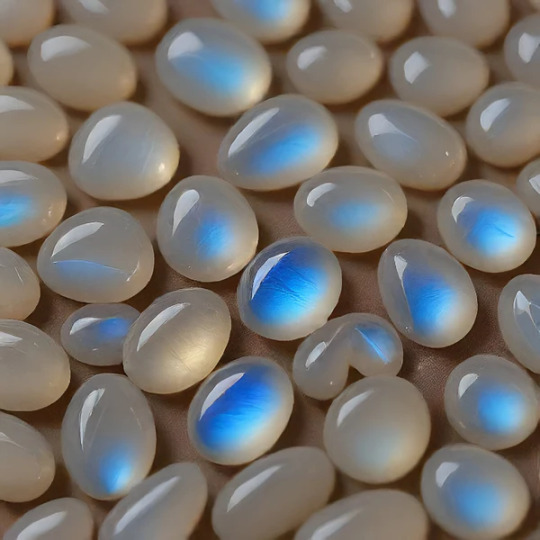
Benefits of Wearing Moonstone as a Birthstone
Wearing moonstone as a birthstone is believed to have several benefits. Moonstones are said to enhance intuition, promote emotional well-being, and encourage creativity. They are also believed to provide protection during travel and bring good fortune to the wearer.
History and Symbolism of Alexandrite
Alexandrite is a rare and mesmerizing gemstone known for its remarkable color-changing properties. It was discovered in the early 19th century in the Ural Mountains of Russia and was named after the Russian tsar, Alexander II.

Characteristics and Properties of Alexandrite
One of the most fascinating aspects of Alexandrite is its ability to change color under different lighting conditions. In daylight, it appears green or bluish-green, while under incandescent light, it transforms into a reddish or purplish hue. This phenomenon is known as pleochroism.
Benefits of Wearing Alexandrite as a Birthstone
Alexandrite is associated with good fortune, love, and personal growth. It is believed to bring balance to one's life and strengthen relationships. Alexandrite is also thought to enhance creativity and intuition, making it an excellent choice for those seeking personal transformation and self-discovery.
Choosing the Right June Birthstone for You
Whether you are drawn to the timeless elegance of Pearls, the mesmerizing glow of Moonstones, or the captivating color-changing properties of Alexandrite, there is a June birthstone that suits your unique personality and desires. Each of these gemstones carries its own symbolism, characteristics, and benefits, making them meaningful choices for those born in June.
As you explore the world of Pearl, Moonstone, and Alexandrite, consider the qualities you wish to enhance in your life. Whether it's emotional balance, intuition, or personal growth, your June birthstone can serve as a beautiful reminder of your aspirations and a source of positive energy in your journey.
Choose your June birthstone with care and wear it with pride, knowing that you are carrying a piece of natural beauty and symbolism with you. Let the magic of Pearl, Moonstone, or Alexandrite inspire you and bring joy to your life as you embrace the unique qualities they are believed to offer.
So, whether you choose the iridescent beauty of Pearls, the ethereal glow of Moonstones, or Alexandrite's captivating color-changing properties, let your June birthstone reflect your personality and be a source of positive energy in your life. Embrace the enchantment and symbolism of these gemstones and let them shine bright on your journey.
Birthstone magic blooms! Beyond your own gem, discover garnet's fire, amethyst's calm, and aquamarine's hope. Find strength in diamond, love in emerald, and magic in alexandrite. Ignite passion with ruby, seek peace in peridot, and wisdom in sapphire. Embrace tourmaline's vibrancy, topaz's warmth, and let tanzanite or turquoise guide you.
#crystal gems#crystals#gemstone#gemstones#minerals#hidden gems#purple gemstones#alexandrite#moonstone#gems#june birthstone#gemology
0 notes
Text
Batu Termahal di Dunia, Ada yang Harga Selangit Capai Rp841 Miliar per Karat
Batu mulia hadir dalam beberapa jenis dengan warna warni yang begitu cantik dan mempesona yang diaplikasikan pada sebuah perhiasan atau aksesoris lainnya.
Namun, tahukah kamu kalau batu mulia itu memiliki harga yang sangat mahal? Bahkan, ada batu mulia yang harganya mencapai Rp841 miliar per karat, loh!
1. Batu termahal di dunia ada Alexandrite
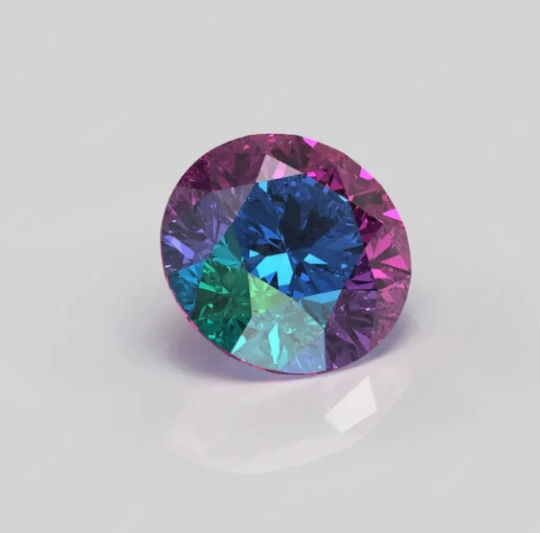
Alexandrite merupakan jenis chrysoberyl dan pertama kali ditemukan di Pegunungan Ural, Rusia pada tahun 1830-an.
Menariknya, batu ini bisa berubah warna ketika dalam kondisi tertentu, misalnya seperti zamrud dalam cahaya dan merah ruby jika dalam kegelapan. Batu Alexandrite memiliki harga sekitar 12.000 USD per karat atau setara dengan Rp172 juta.
2. Berlian
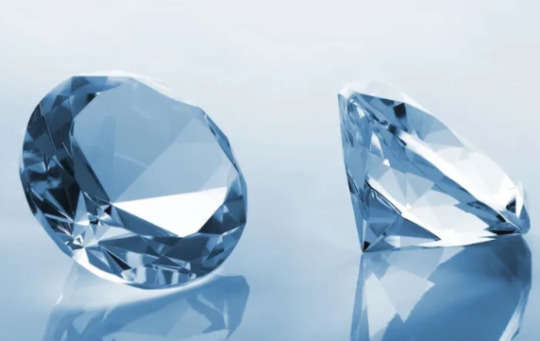
Berlian adalah salah satu batu permata dalam kategori termahal di dunia. Meskipun saat ini sudah banyak orang yang memilikinya.
Tapi tahukah kamu, jika berlian ditemukan dalam kimberlite dingin yang terbentuk selama 1 hingga 3 miliar tahun. Hal inilah yang membuat harganya sangat mahal.
Harga berlian bisa mencapai 15.000 dollar Amerika Serikat per karat atau setara dengan Rp215 juta.
3. Red Beryl
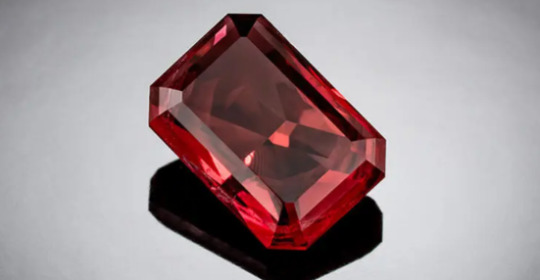
Untuk batu permata termahal di dunia adalah Red Beryl. Batu ini merupakan mineral yang terdiri dari berilium, alumunium, dan silikat.
Red Beryl ditemukan dalam tuf mineralisasi riolit di daerah Thomas Range, Utah. Batu permata ini memiliki harga mencapai 10.000 USD atau setara dengan Rp143, 5 juta per karat.
0 notes